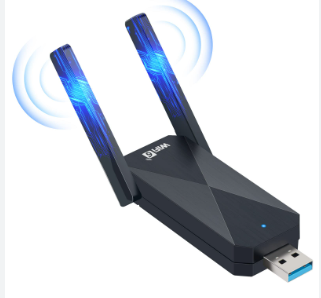Unleashing the Power of WiFi 6: Revolutionizing Wireless Connectivity
Introduction
In an era where wireless connectivity is essential, WiFi 6 has emerged as the latest standard, promising to revolutionize the way we connect to the internet. Also known as 802.11ax, WiFi 6 introduces a host of advanced features and improvements over its predecessors. In this blog, we will explore the key features and advantages of WiFi 6, its impact on various applications, and how it enhances wireless connectivity in our daily lives.

I. The Evolution of WiFi Standards
A. Understanding WiFi Standards
- WiFi standards are a set of specifications that define wireless network protocols and technologies.
- They ensure compatibility and interoperability between devices from different manufacturers.
B. WiFi 6: An Overview
- WiFi 6, based on the 802.11ax standard, represents a significant advancement in wireless technology.
- It operates in both the 2.4 GHz and 5 GHz frequency bands and introduces several key features to improve network efficiency.
II. Key Features and Advantages of WiFi 6
A. Increased Speeds
- WiFi 6 offers higher data rates compared to its predecessors, enabling faster and more responsive internet experiences.
- It achieves this through advanced modulation techniques and wider channel bandwidths (up to 160 MHz).
B. Orthogonal Frequency Division Multiple Access (OFDMA)
- OFDMA is a key feature of WiFi 6 that enables simultaneous data transmission to multiple devices.
- It improves network efficiency and reduces latency, making it ideal for environments with numerous connected devices.
C. Multi-User Multiple Input Multiple Output (MU-MIMO)
- It expands on MU-MIMO technology, allowing for simultaneous data streams to multiple devices.
- It enhances network capacity and performance, particularly in high-density environments like stadiums, airports, and concert venues.
D. Target Wake Time (TWT)
- TWT is a power-saving feature that enables devices to schedule their wake-up and sleep times.
- It significantly improves battery life for devices connected to WiFi networks, such as smartphones, IoT devices, and laptops.
III. Impact on Everyday Use
A. Enhanced Performance in Crowded Environments
- WiFi 6’s features, such as OFDMA and MU-MIMO, mitigate the impact of network congestion in crowded areas.
- Users can experience faster and more reliable connections, even in environments with many active devices.
B. Improved Streaming and Gaming Experiences
- WiFi 6’s higher speeds and reduced latency enhance streaming and gaming experiences.
- Users can enjoy smoother 4K streaming, lag-free online gaming, and faster downloads, even with multiple devices connected simultaneously.
C. IoT and Smart Home Applications
- It increased capacity and improved efficiency make it ideal for IoT devices and smart home applications.
- It can handle the growing number of connected devices, enabling seamless communication between devices and enhancing overall smart home performance.
D. Business and Enterprise Applications
- WiFi 6’s advanced features cater to the demands of business and enterprise environments.
- It supports bandwidth-intensive applications, such as video conferencing, cloud computing, and large file transfers, with improved speed and reliability.
IV. Conclusion
WiFi 6, with its advanced features and improvements, marks a significant leap forward in wireless connectivity. It offers faster speeds, increased capacity, and enhanced performance, ensuring a seamless and efficient internet experience. As WiFi 6 continues to gain widespread adoption, users can expect smoother streaming, lag-free gaming, improved IoT connectivity, and enhanced productivity in business settings. Embracing the power of WiFi 6 opens up a world of possibilities, transforming the way we connect and interact in our increasingly connected lives.
